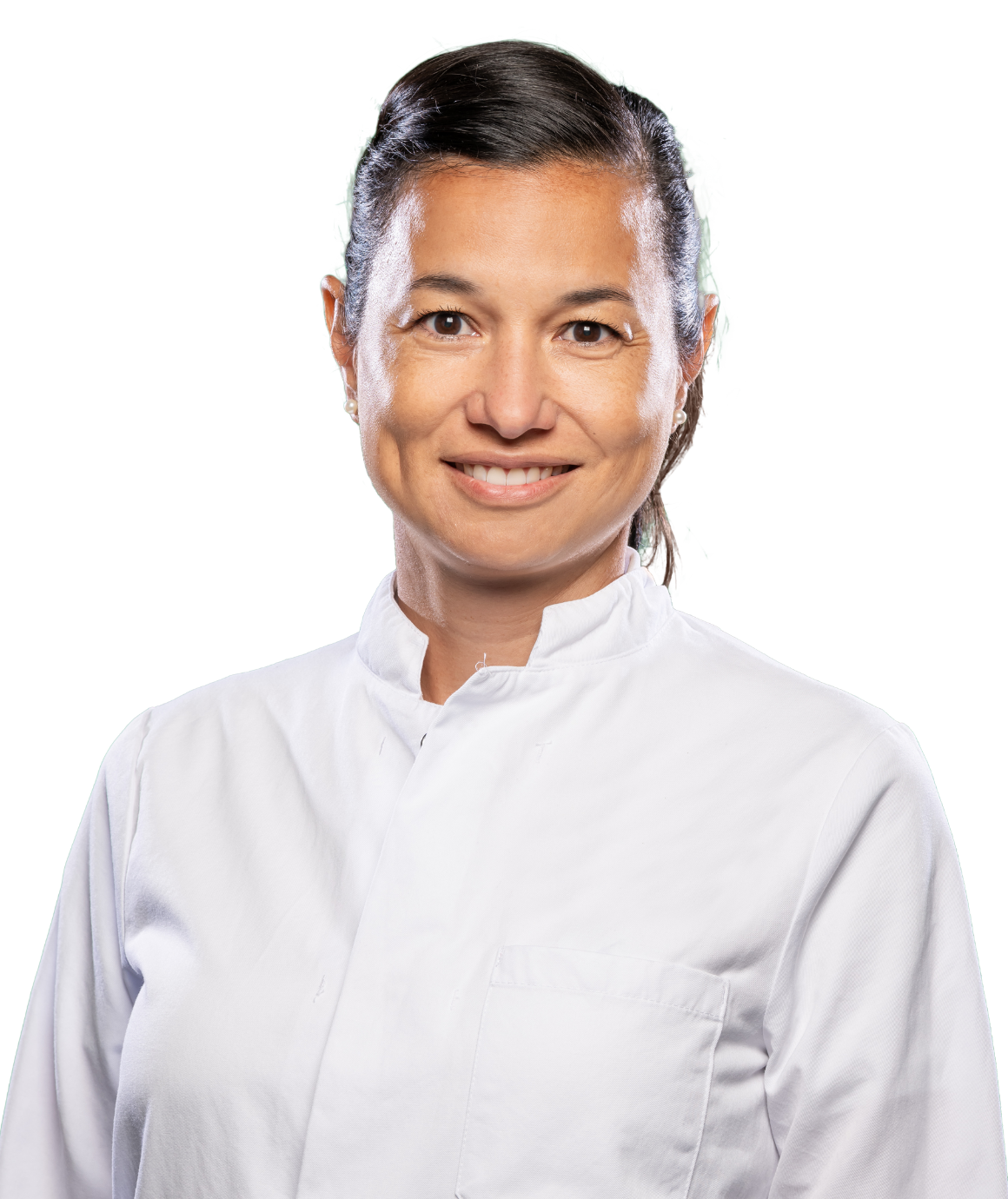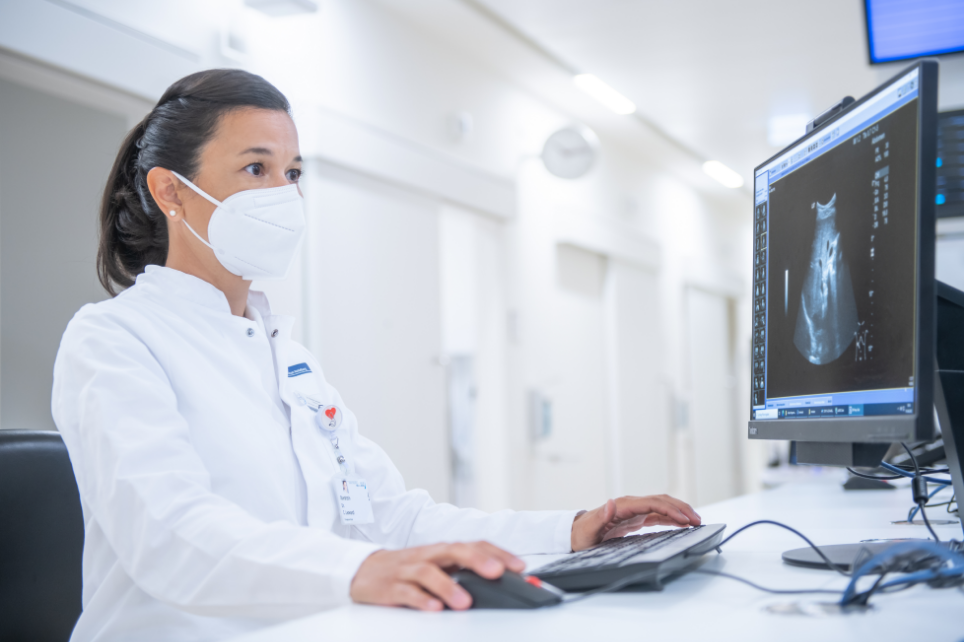Perspective from
Dr. Christine Leowardi
Head of the Surgical Outpatient Department
and Senior Physician for
Surgery

The metal doors of the shock room open automatically. There I have just treated a severely injured bicycle rider with my team. But there is no time for a break. My resident physician Dr. Lukas Liesenfeld is waiting for me in the coordination room. Together with the nurse on duty he explains Ms. Schäfer’s condition to me. In NIDA IT System we zoom onto the smallest details of the ultrasound images. We quickly agree that she does not appear to be suffering from a gallstone or from any other disease in the abdomen. Then we filter the blood values and can rule out an inflammation. However, troponin exceeds the fixed normal range. This elevated troponin can indicate a heart problem, but also renal insufficiency. As always, a diagnosis based on only one parameter is complex which is why I consulted with Dr. Liesenfeld once again. Dr. Liesenfeld‘s treatment strategy was correct. I would have made the same decision because we must first find out whether there are any life-threatening diseases or injuries in the abdomen. At the same time, he has acted with foresight in asking for the troponin value. I am pleased that I can count on a highly qualified medical and nursing staff at UKHD.
If it is really serious – the Shock Room The shock room is the first place that persons with life-threatening injuries (polytrauma) or who are in an unstable situation go to. As a first step, a specially trained team comprising trauma surgeons, anesthetists, radiologists, and nurses try to restore the patient’s vital functions. The shock room is a fixed element of an emergency room and is in the Surgical Outpatient Department at UKHD.
The three of us enter the treatment room to pursue the suspicion of a heart problem. “Hello Ms. Schäfer. I am Dr. Leowardi, the Senior Physician in charge of the surgical emergency room. After evaluating the findings to date everything is okay in your abdomen. Did you have any pain in your left arm over the past few days?”. Ms. Schäfer considers this and then says: Yes, two days ago and even this morning some pain radiated into my left arm.” My suspicion is confirmed: Ms. Schäfer could have suffered an infarction of the heart. With these symptoms this would be unusual but not inconceivable. This is a major challenge in the emergency room. We cannot limit ourselves to the first tentative diagnosis but must also consider are possibilities. “It could be that your problems come from your heart. We are now going to perform an EKG and will bring you to our Chest Pain Unit”.
I look at my watch. Unbelievable but my shift is almost over. While working I am never tired regardless of whether I am treating 15 or 40 patients. On days with large numbers of patients my organizational tasks are also of crucial importance. I must make sure that there is enough staff at critical points and that enough infrastructure remains free to deal with patients having the highest priority. The physical and mental efforts are nothing compared to the feeling off happiness and satisfaction that my profession gives me when I can help someone by choosing the right treatment. While leaving the treatment room I am already thinking about the next working day. At any rate, I will have to ask Dr. Evangelos Giannitis, the head of the Chest Pain Unit, about Ms. Schäfer’s well-being tomorrow.
Back to physician's letter



